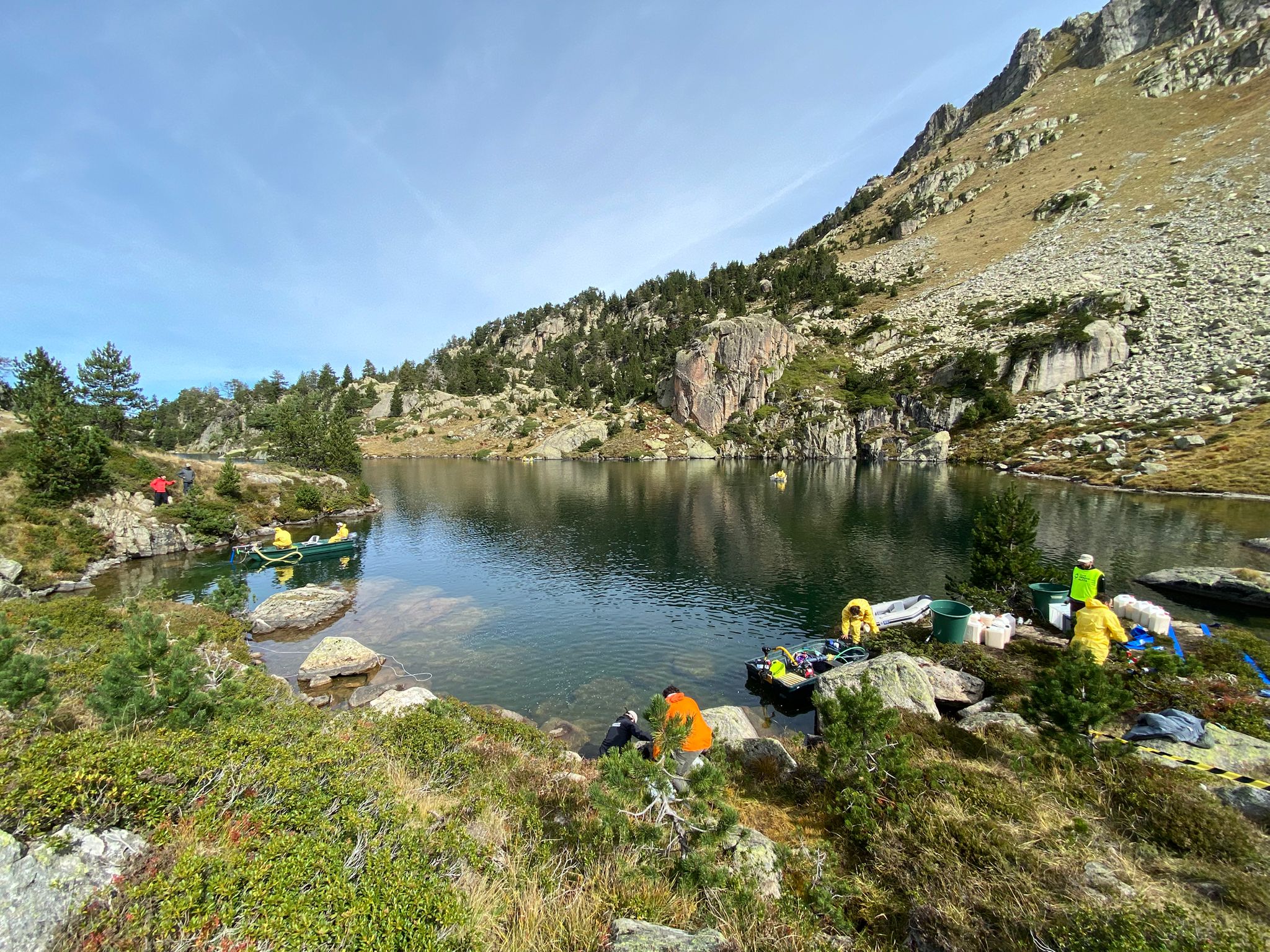The LIFE RESQUE ALPYR project has launched a pioneering pilot test for the removal of invasive fish using a biodegradable biocide in a high mountain lake. This initiative is part of a broader strategy to restore high-altitude aquatic habitats, aiming to transform the restored lakes into biodiversity reservoirs and ecological corridors. It will be the first application of its kind in a high mountain lake in southern Europe, providing valuable data on its effectiveness as a management tool.
One of the main threats to these ecosystems is the presence of introduced fish species, such as trout and, especially, the common minnow, which outcompete native species and severely disrupt the balance of ecosystems. Therefore, one of the key actions of the project is the restoration of 22 high mountain lakes in the Pyrenees and the Alps by eliminating introduced fish using traditional techniques.
Rotenone: An innovative solution
Conventional fish capture techniques, such as nets, traps, and electrofishing, are commonly used for fish removal in mountain lakes. However, biological and environmental constraints, such as the size of the lake or the presence of minnows, can limit their effectiveness. For this reason, exploring alternative methods is necessary.
The common minnow, a small cyprinid with rapid growth, high reproductive rate, and great adaptability, can form dense populations even in extreme conditions, making population control challenging. In this context, a pilot test has been conducted using rotenone, a natural biodegradable ichthyocide extracted from the roots of plants in the Fabaceae family, traditionally used for fishing in Southeast Asia and South America. It is similar to troca or Verbascum, a plant historically used for fishing in ponds and streams in the Pyrenees, though now its use is prohibited.
In the environment, rotenone degrades quickly, persisting only a few days or weeks. So far, its use as an ichthyocide has been concentrated in North America, Australia, New Zealand, the United Kingdom, and northern Europe, particularly in Norway, with some isolated experiences in other parts of Europe, including Spain.
Pioneering application in high mountain lakes of the Pyrenees
The pilot test was carried out in a lake located in the peripheral area of the Aigüestortes and Estany de Sant Maurici National Park (PNAESM), in the Aran Valley. A strategically located body of water was chosen, as there are no lakes or large upstream watercourses that could pose a risk of fish reintroduction after the intervention, nor that would hinder the application of the product without affecting nearby habitats.
The experiment will provide crucial data on the effectiveness of this substance in a new biogeographic context. The entire process will be monitored through a rigorous follow-up program, ensuring the safety and efficacy of this innovative technique.

The operation was carried out by Sorelló, Estudis al Medi Aquàtic, S.L. and the LSorellona Association, with the coordination and scientific supervision of the Centre for Advanced Studies of Blanes (CEAB, CSIC) and the Institute of Environmental Diagnosis and Water Studies (IDAEA, CSIC), with the direct support of the Aran Council, Forestal Catalana, and the Aigüestortes and Estany de Sant Maurici National Park (PNAESM).
LIFE RESQUE ALPYR
This is a LIFE project aimed at the recovery of mountain aquatic habitats by improving the conservation of various habitats and species in four Natura 2000 sites in the Alpine biogeographic regions of the Pyrenees (northeast Spain) and the Alps (northwest Italy) (www.liferesquealpyr.es).
The project is co-financed by the European Union’s LIFE 2020 program, which promotes conservation and habitat and species restoration actions in protected areas within the European Natura 2000 network. In the Catalan part of the project, participants include the Department of Territory, Housing, and Ecological Transition of the Generalitat de Catalunya, the Conselh Generau d’Aran, the University of Barcelona, the IDAEA-CSIC, the companies Forestal Catalana and Sorelló Estudis al Medi Aquàtic, and the La Sorellona association. On the Italian side, partners include the Mont Avic Nature Park, the Università degli Studi di Pavia, the Università della Calabria, and the Water Research Institute of the National Research Council (IRSA-CNR). Additionally, the Andrena Foundation, the Gran Paradiso National Park, and the municipalities of Espot and Lladorre are participating as co-financiers.




